11-Drive DRAMless SSD Round Up
512GB Benchmark Results
Why you can trust Tom's Hardware
Comparison Products
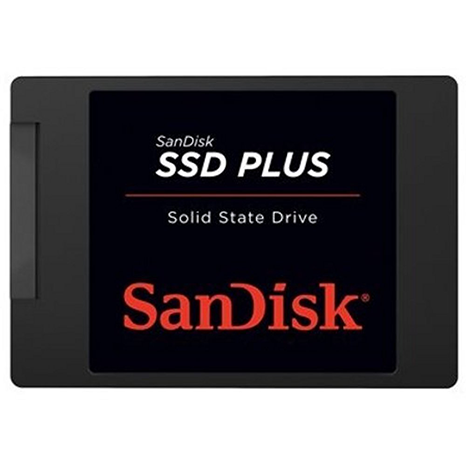
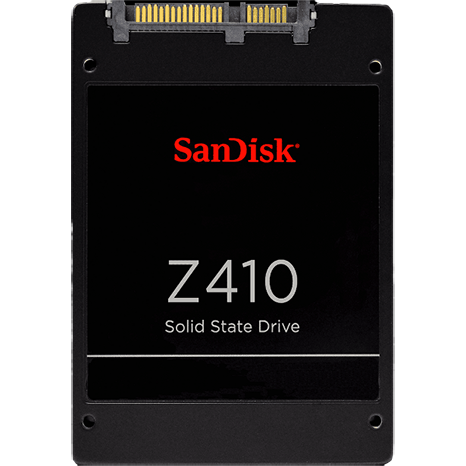
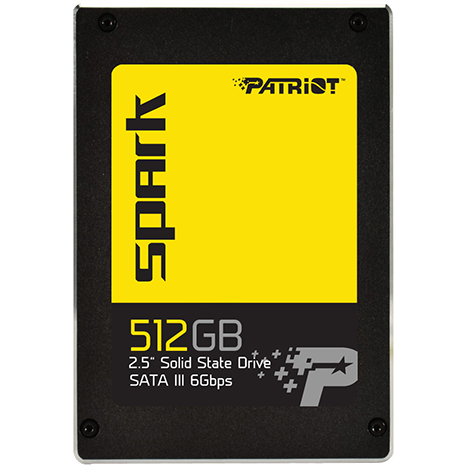
The 512GB-class products are all retail units available for purchase. The SanDisk SSD Plus and Z410 appear again, this time with 480GB of capacity. The Patriot Spark joins the SanDisk duo and is the only product that makes the full LBA range available to the user. Running the Spark with more than 480GB of data could pose a serious performance issue. Most SSDs will use any available space as spare area, but this drive doesn't have a reserve for background activities if the drive is nearly full.
The SSD Plus is the only product in this review with a DRAM cache. We already had the drive tested and the charts compiled before we realized this DRAMless SSD actually has DRAM (at this capacity). We left it in as a comparison point.
Sequential Read Performance
To read about our storage tests in-depth, please check out How We Test HDDs And SSDs. We cover four-corner testing on page six of our How We Test guide.

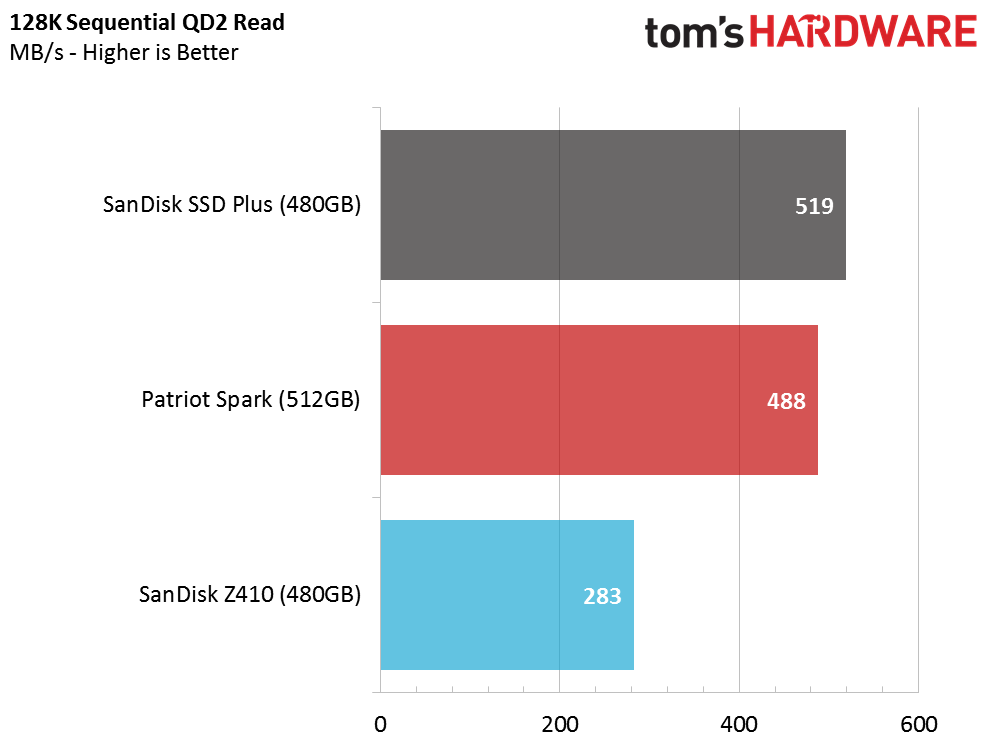
This version of the SanDisk SSD Plus uses a Marvell Dean 4-channel flash processor. This is the same part used in the Crucial MX300, SanDisk X400, and a few other new mainstream SSDs. The Spark joins the SSD Plus with acceptable sequential read performance, but the Z410 trails both at low queue depths.
Sequential Write Performance
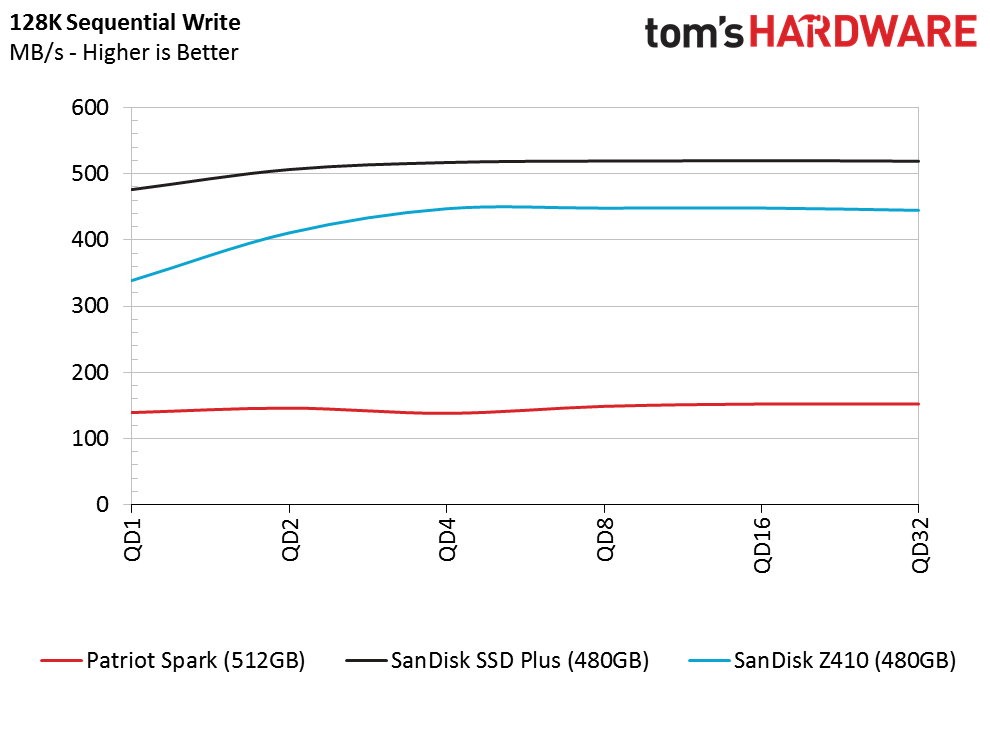
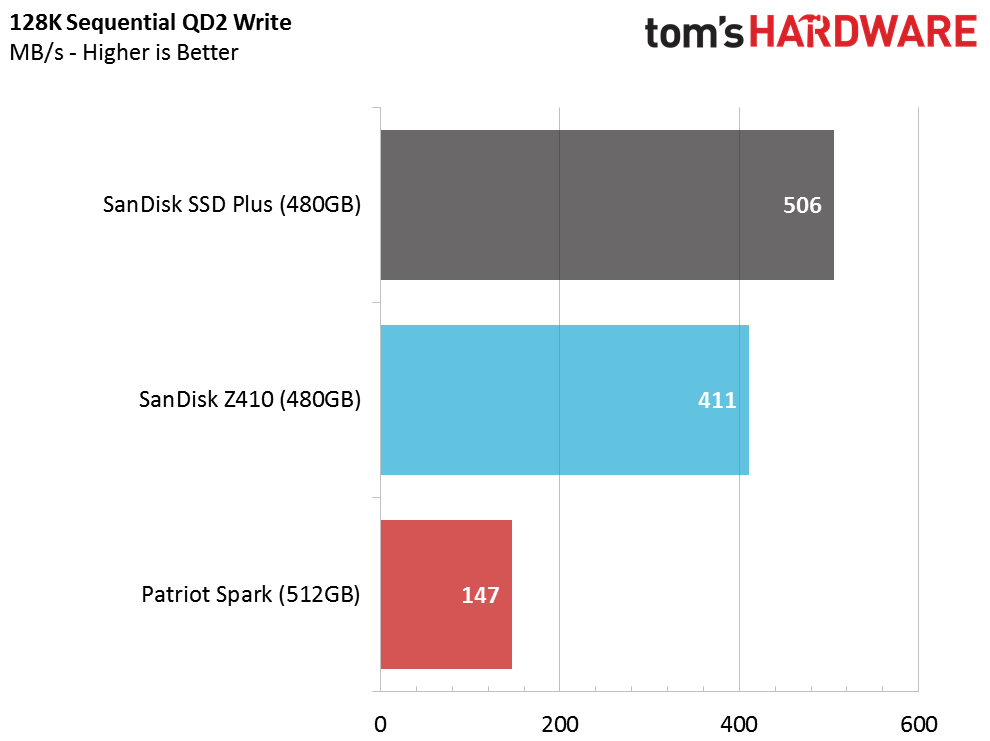
The Patriot Spark 512GB has a rough time in our sequential write test. In the next section, the Spark gives us a misleading result during a write to the full usable space of the drive. In this test, following other disk activity, the Spark trails the other DRAMless SSDs.
Sustained Sequential Write Performance


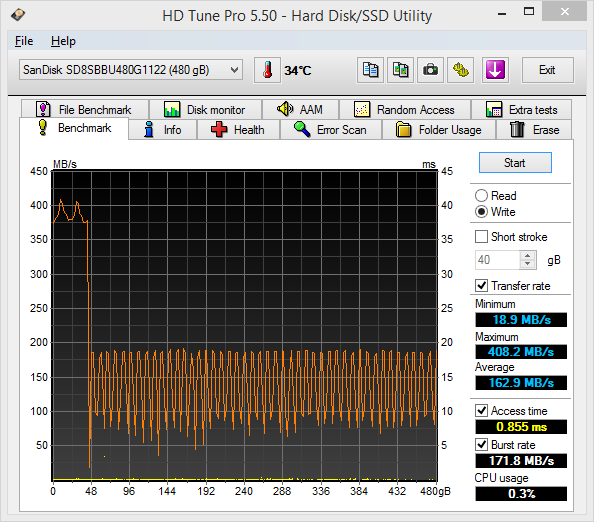
This is where things get interesting. The HD Tune Pro write workload is the second test we perform when new SSDs hit the lab (the first is an HD Tune Pro read workload across the entire LBA range). The Spark 512GB didn't drop to native TLC speeds on the first pass, but it provided 150 MB/s during the second pass.
The two SanDisk SSDs deliver different levels of performance. The SSD Plus has a DRAM cache and a newer generation controller, so we can't chalk all of the performance variances up to the cache alone.
Random Read Performance
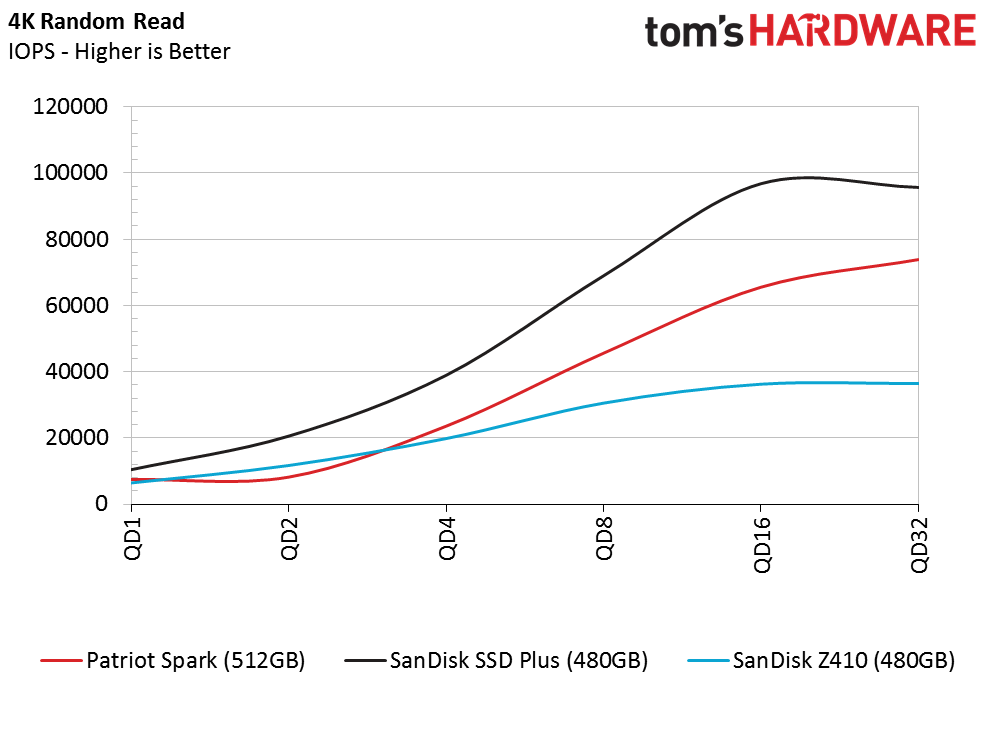
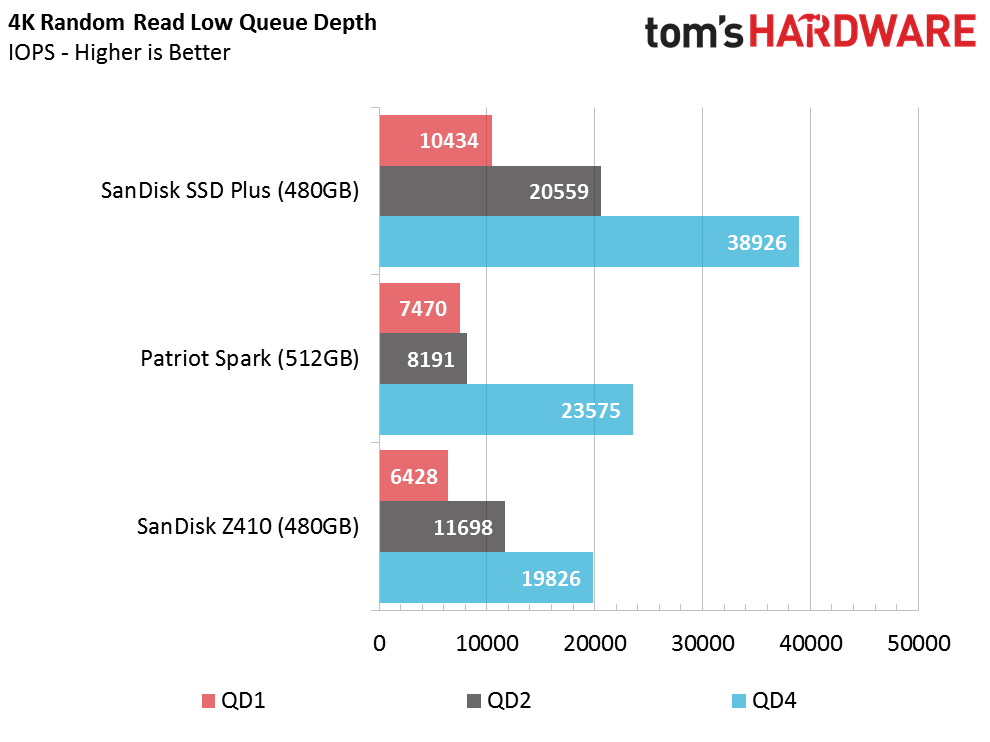
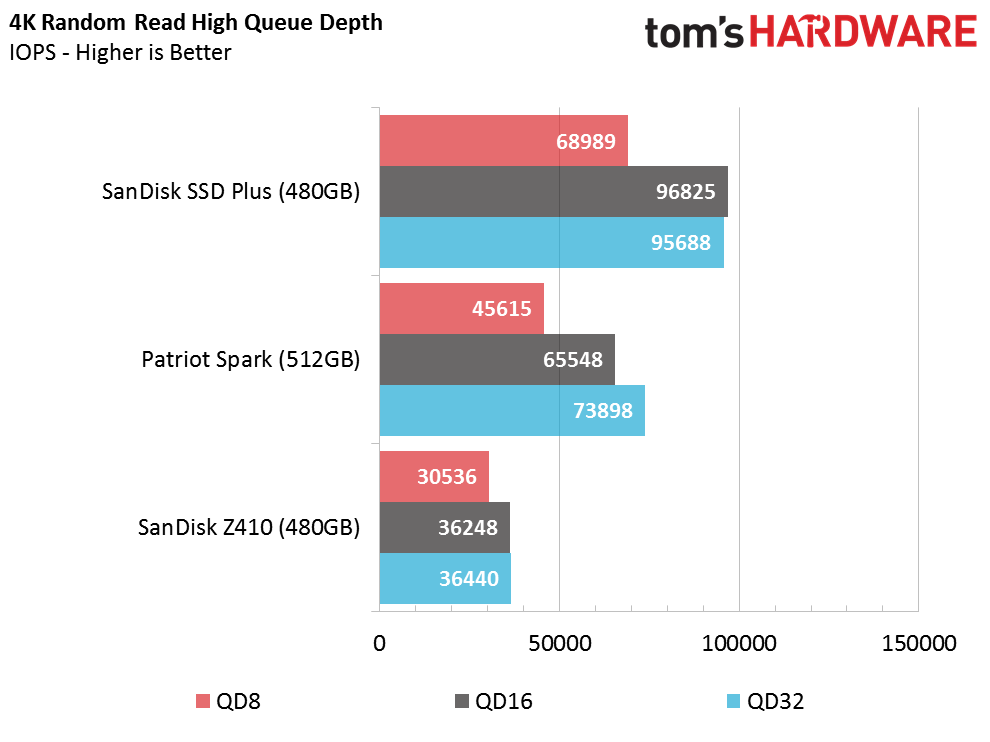
A DRAM cache increases random performance more than sequential performance, so it didn't come as a surprise when the SSD Plus 480GB outperformed the other two products. The Patriot Spark delivers better random performance at high queue depths compared to the Z410, but both DRAMless SSDs start out with nearly equal QD1 performance.
Random Write Performance

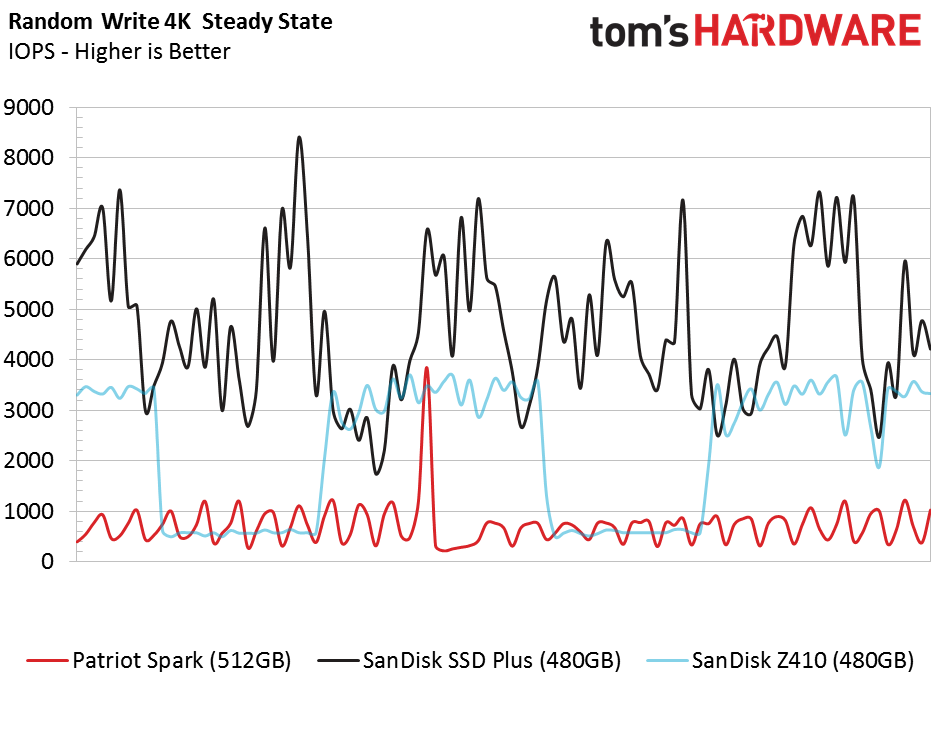
The SanDisk Z410 nearly drops off the chart. The Z410 appears to enter into a panic mode, which is never a good sign for flash-based storage. The result still weighs in at nearly 600 IOPS, but the SSD paused at some point during the test. The two other products perform as expected.
80 Percent Sequential Mixed Workload
We describe our mixed workload testing in detail here and describe our steady state tests here.
The increased parallel operations, which is the benefit of more NAND on the high capacity models, allows the three 512GB-class SSDs to deliver a significant performance increase over the models with less capacity. This is really the starting point for most of our readers as far as capacity and pricing go. It’s nice to see that these drives still deliver more performance than a hard disk drive (which has DRAM) even with the DRAMless disability in the architecture.
80 Percent Mixed Random Workload
That doesn't mean you should feel inspired to buy one of these products. All three would make a poor boot drive. The SSD Plus 480GB is the only model that we would consider a true entry-level SSD. You could use the others as low-cost mass storage with comparable sequential write performance to modern 7,200 RPM 2.5" disk drives.
Sequential Steady-State
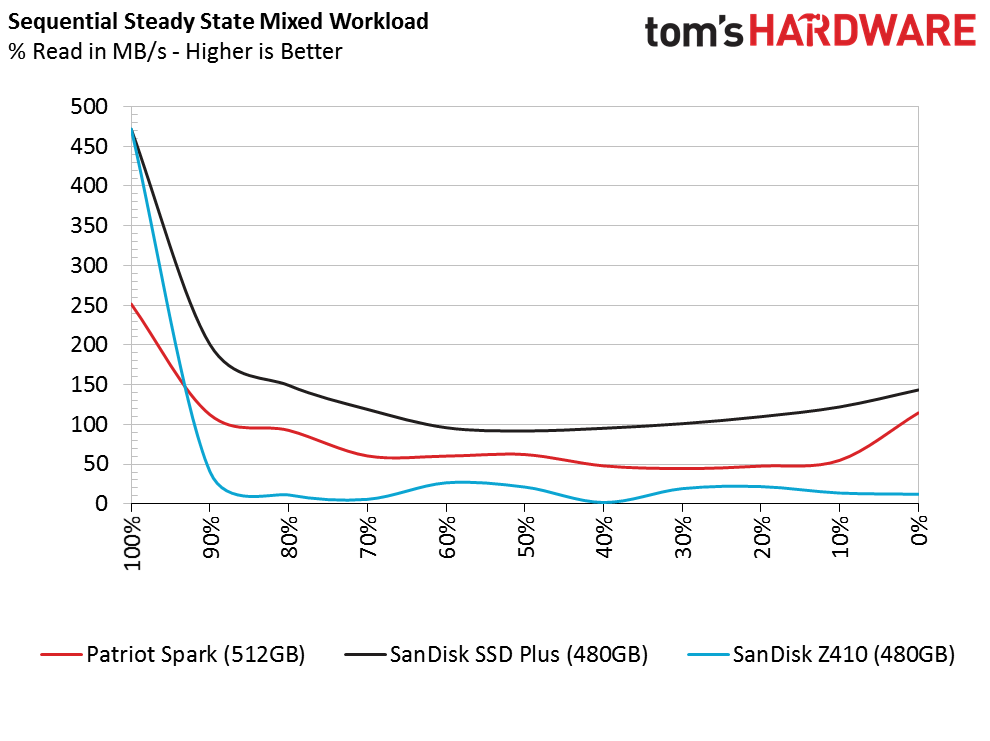
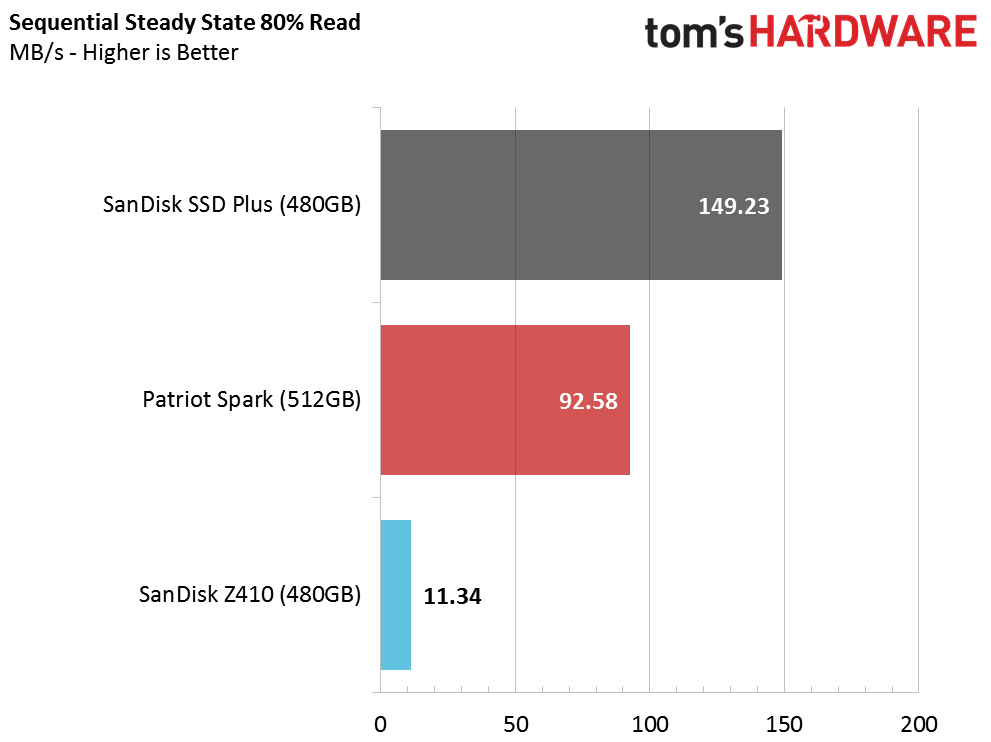
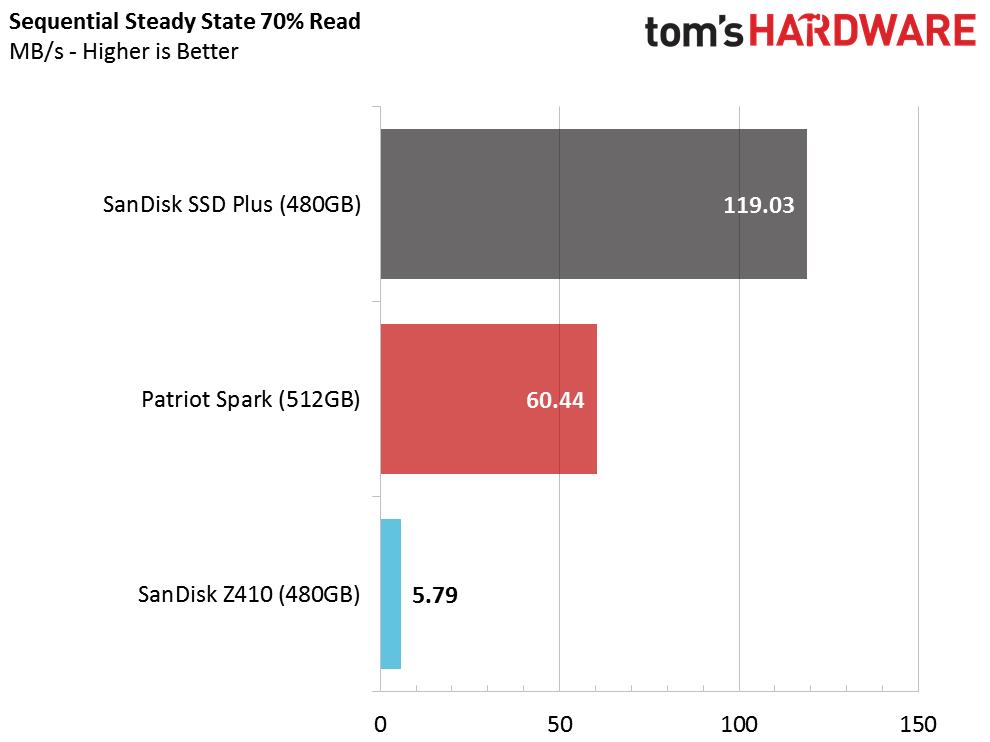
It's interesting to see the different programming involved with the Z410 in different capacities. Normally we would expect the larger drive to deliver better performance across the board, but DRAMless products manage to turn the additional capacity into a disadvantage. It's important to understand what the cache does; it stores the LBA map for faster access. The size of the map swells as the amount of data on the drive increases. This drive has to manage a map that is four times larger than a 120GB model and twice the size of the 240GB model. That makes any steady-state level workloads frustratingly impossible.
Random Steady-State


There is a wide gap between the three products during the steady-state random write test. The DRAM in the SSD Plus really helps here. The DRAMless Z410 shows the small amount of cache embedded in the controller caching the map, but it delivers inconsistent performance. The Spark has consistent performance but delivers it sparingly.
PCMark 8 Real-World Software Performance
For details on our real-world software performance testing, please click here.
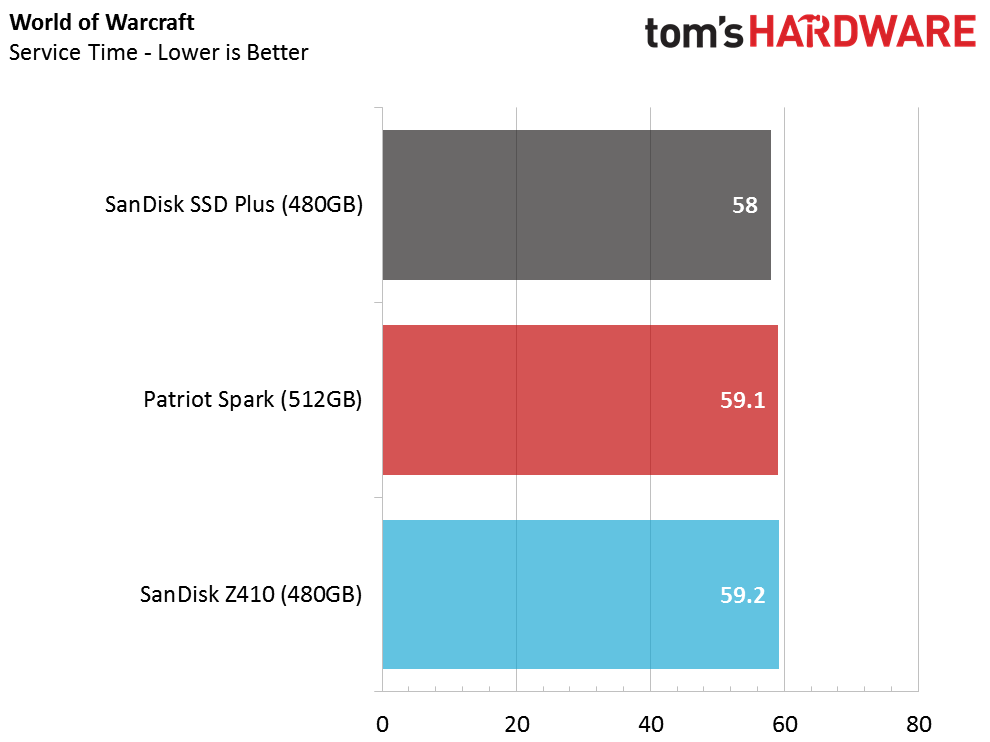
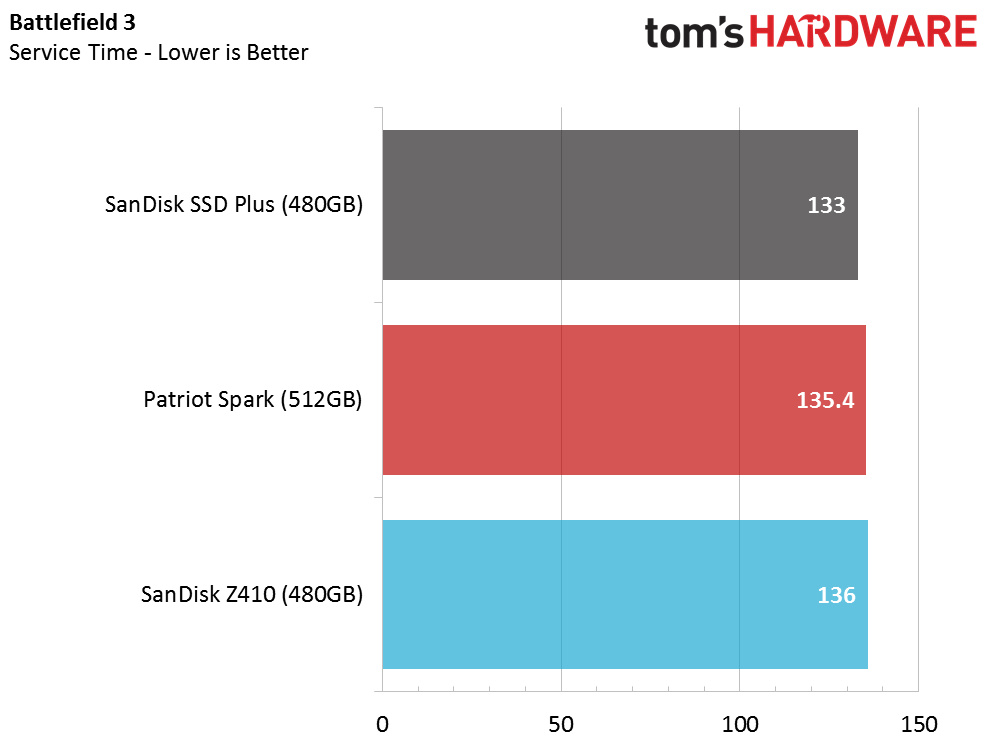

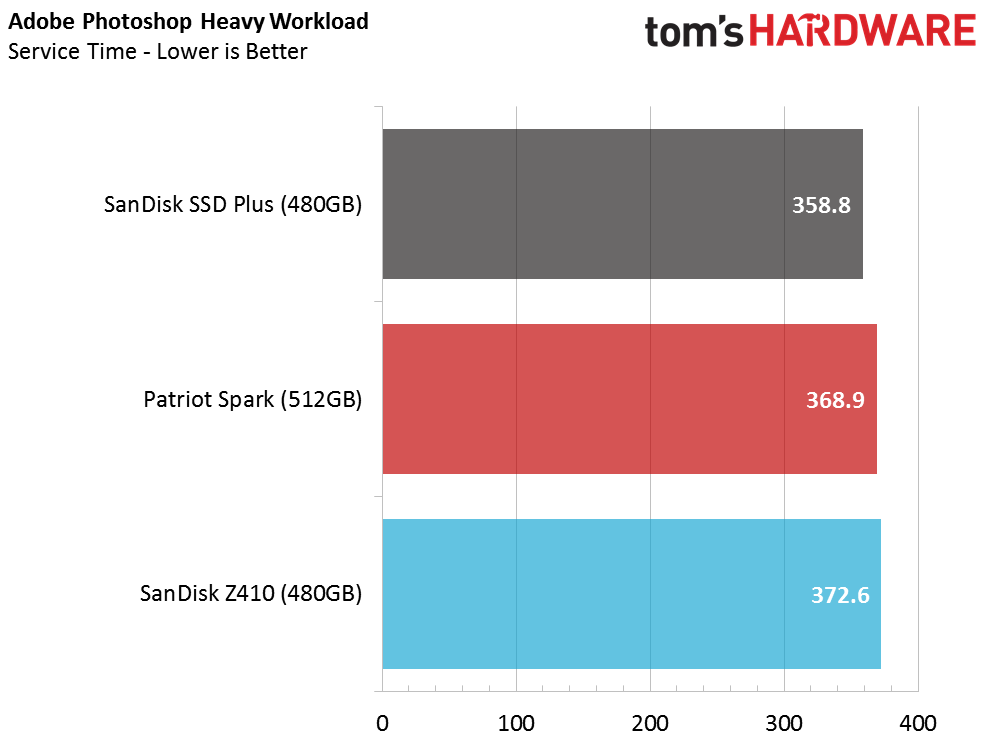
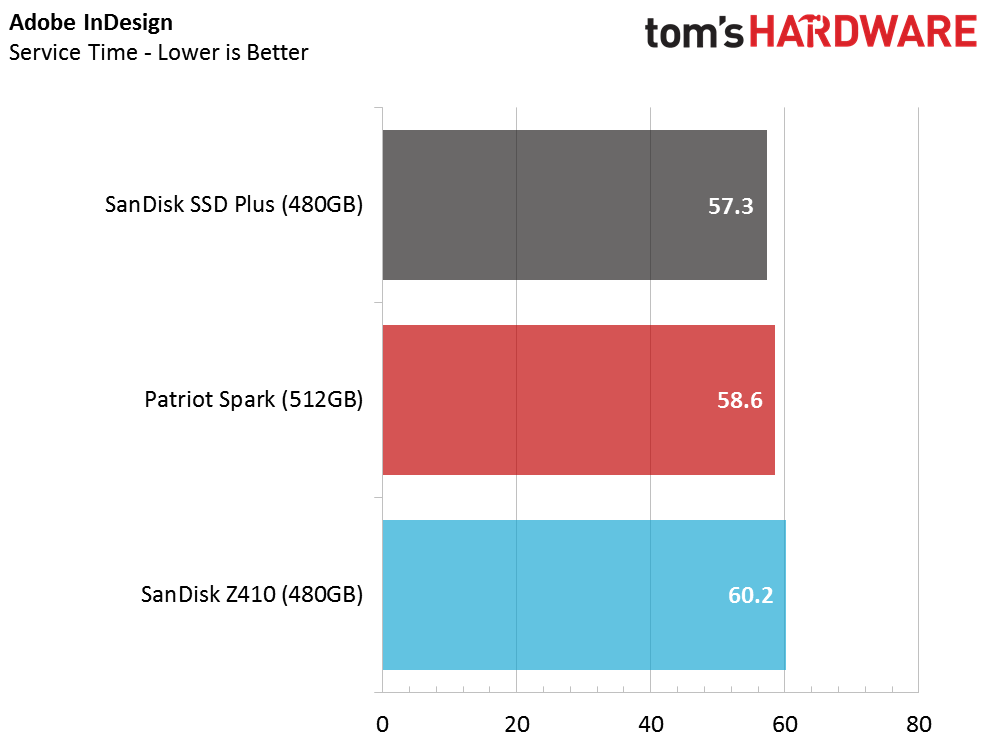

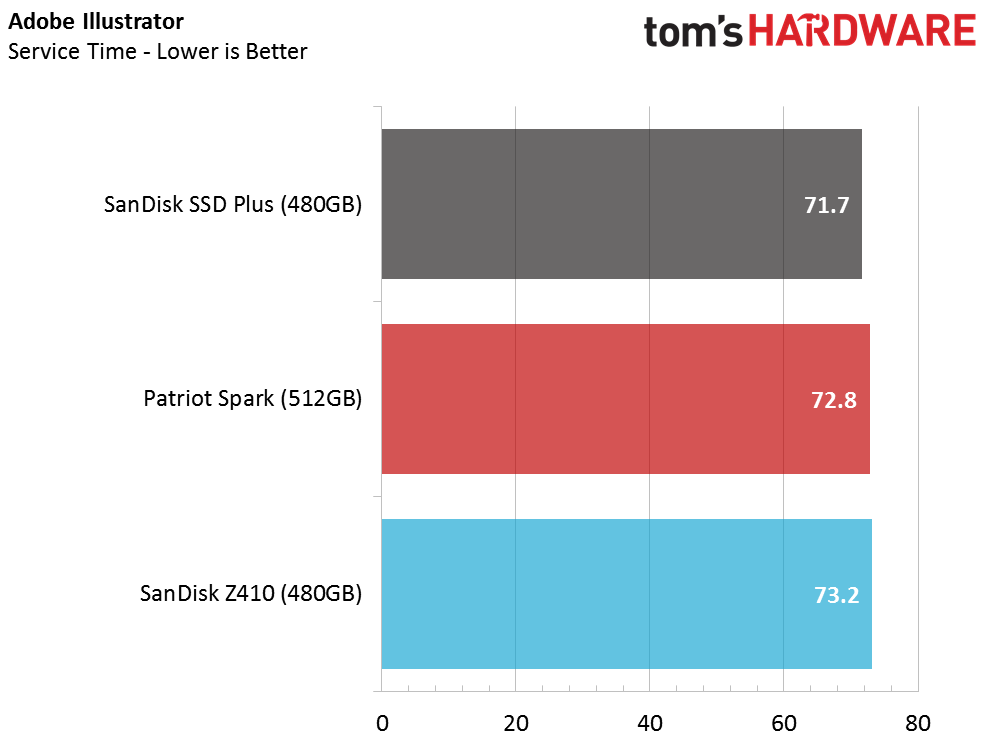
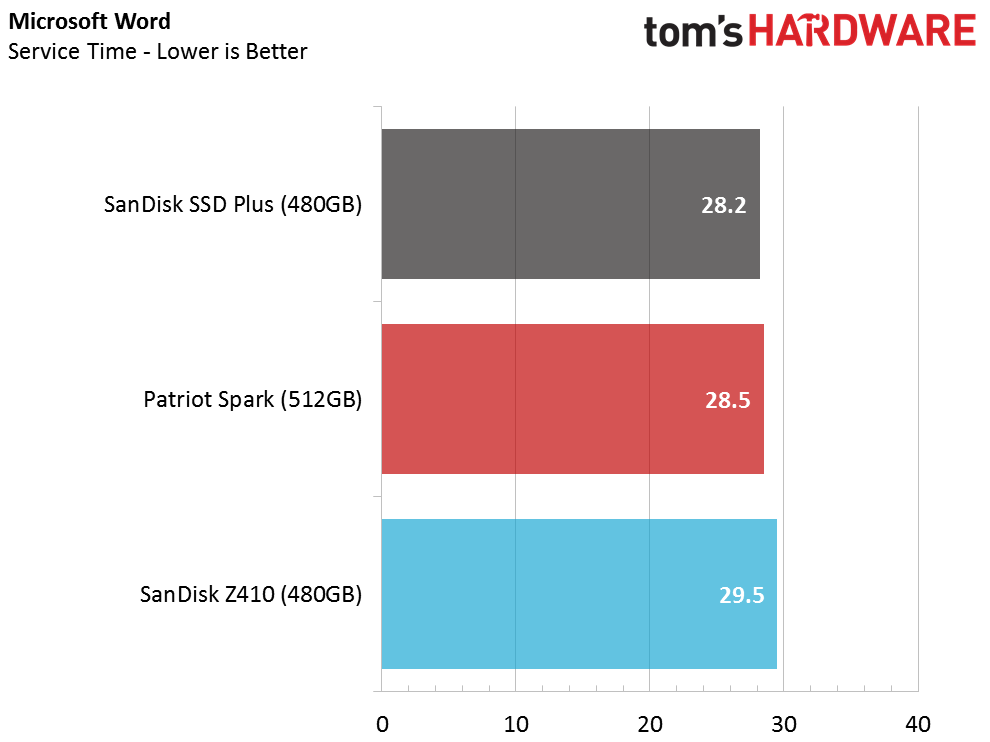
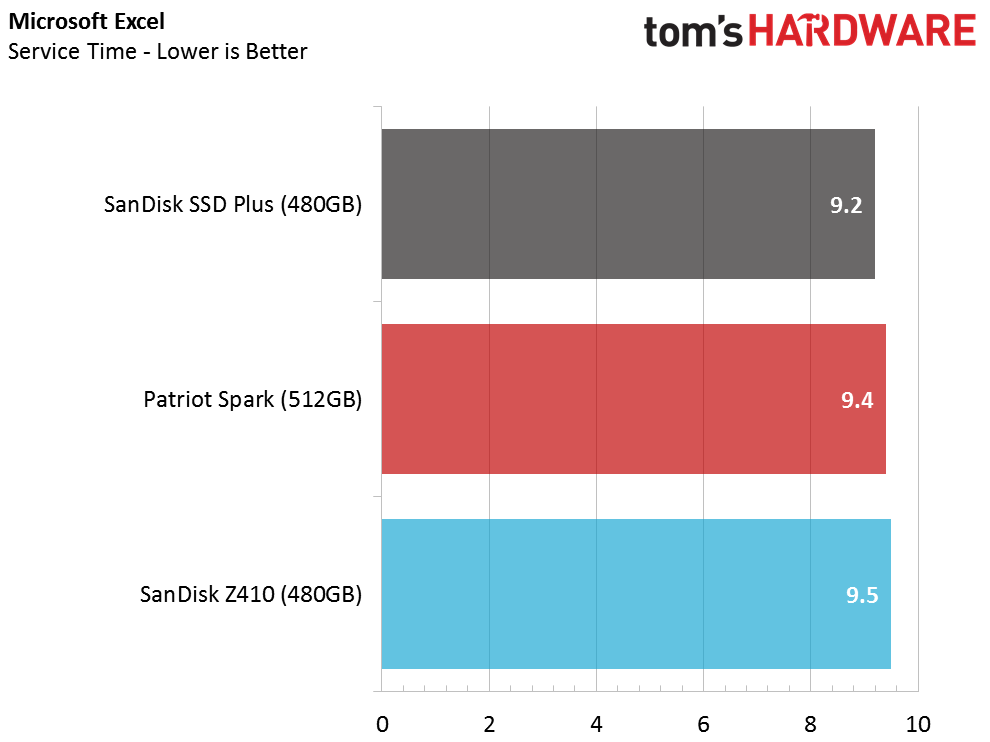
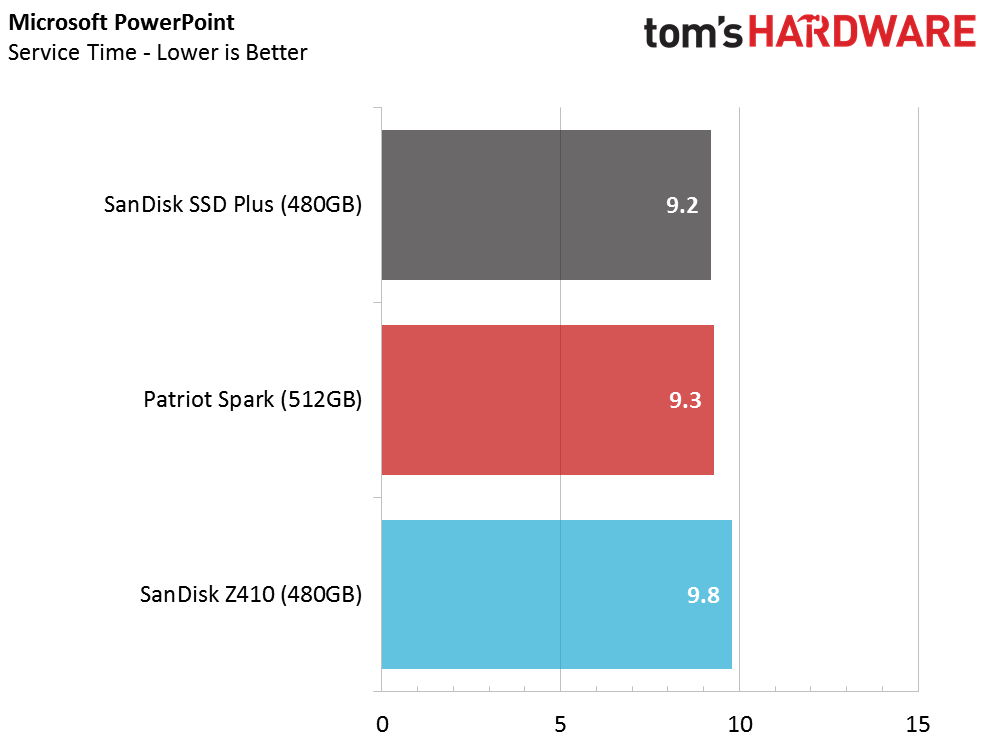
The SSD Plus uses nearly the same configuration as the X400 we tested a few months ago. It doesn't perform as well with applications and time-based tasks, but it serves as a good way to compare an entry-level SSD's performance to the two DRAMless retail products. In some of the tests, we see the difference in the split seconds, but in many, we see the difference in seconds.
It's important to remember that under the RGB lights and fancy components a PC is just a tool. You always want your tool to operate as efficiently as possible. You don't change the job if it takes several seconds longer than it should, you change the tool.
Application Storage Bandwidth
Seconds add up throughout the day. Productivity is important, even if it comes in the form of a few hundred extra megabytes a second.
PCMark 8 Advanced Workload Performance
To learn how we test advanced workload performance, please click here.
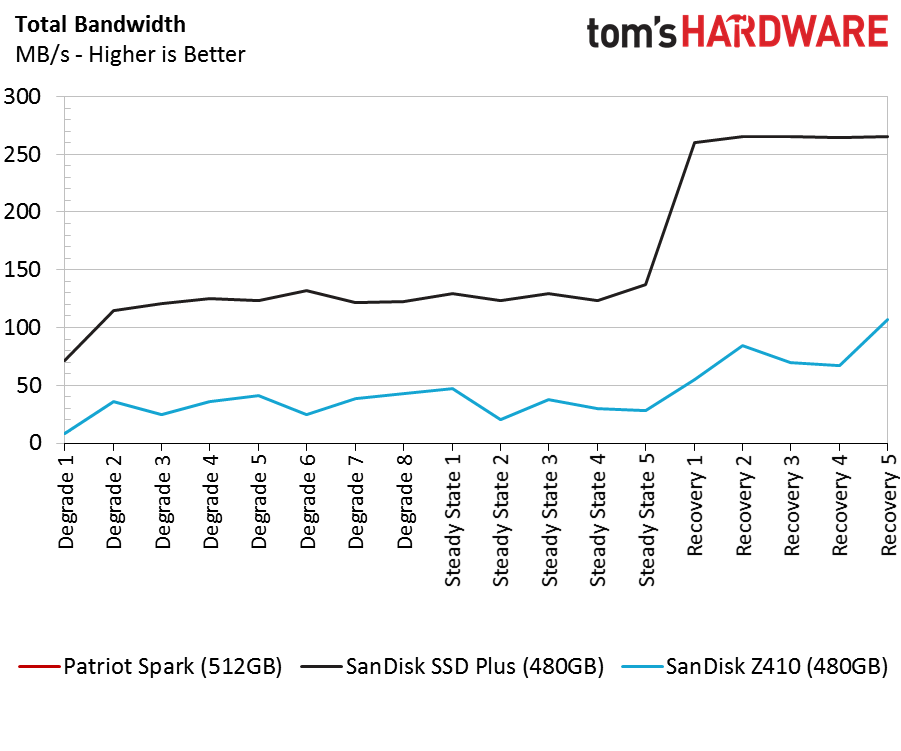
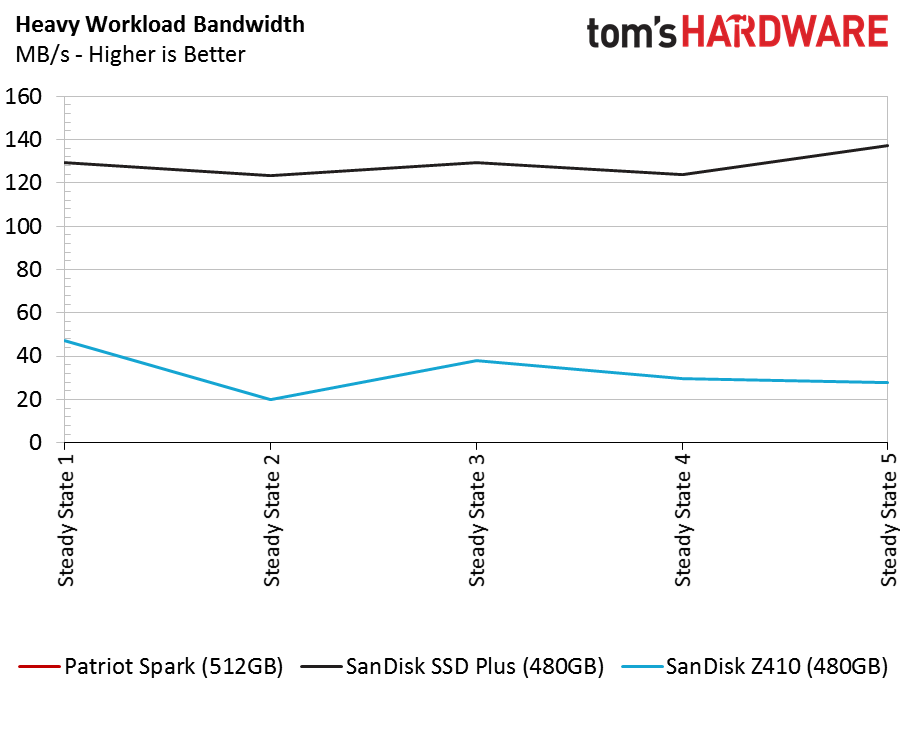

We ran the PCMark 8 Extended Storage Test five times on the Patriot Spark 512GB, and it failed the test every time. First, the test fills the entire user space to build a dirty playground to play in, and then it gives the drive idle time to sweep up the dirty cells. The Spark 512GB doesn't have a significant area for fresh data cells, so it failed early in the test during the "dirty" portion. We mentioned at the start of this page that if you fill the Spark 512GB, it will cause problems later.
Total Service Time
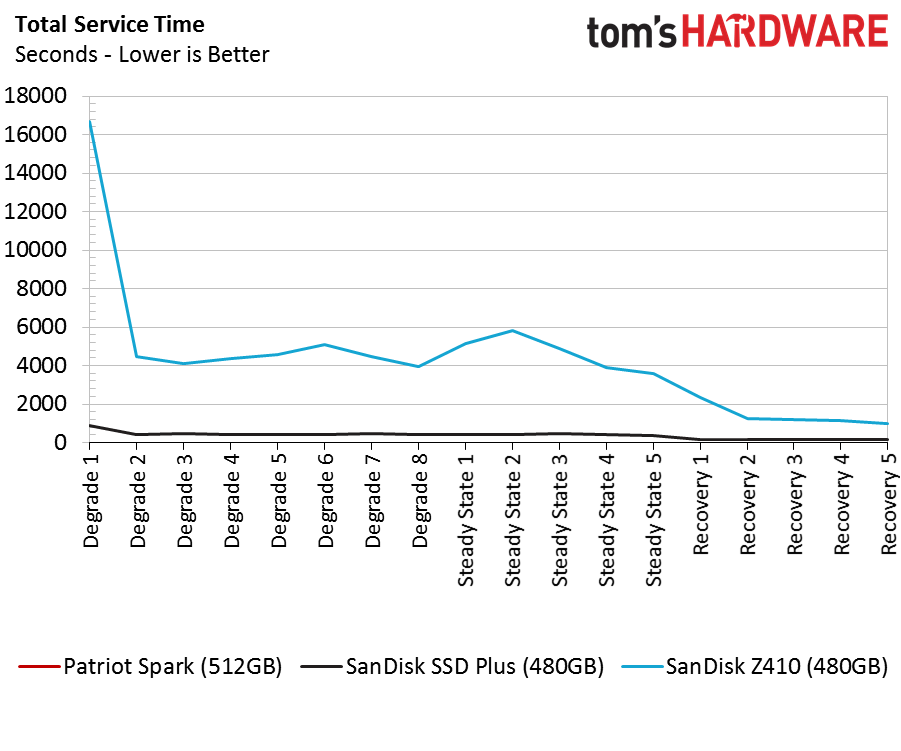
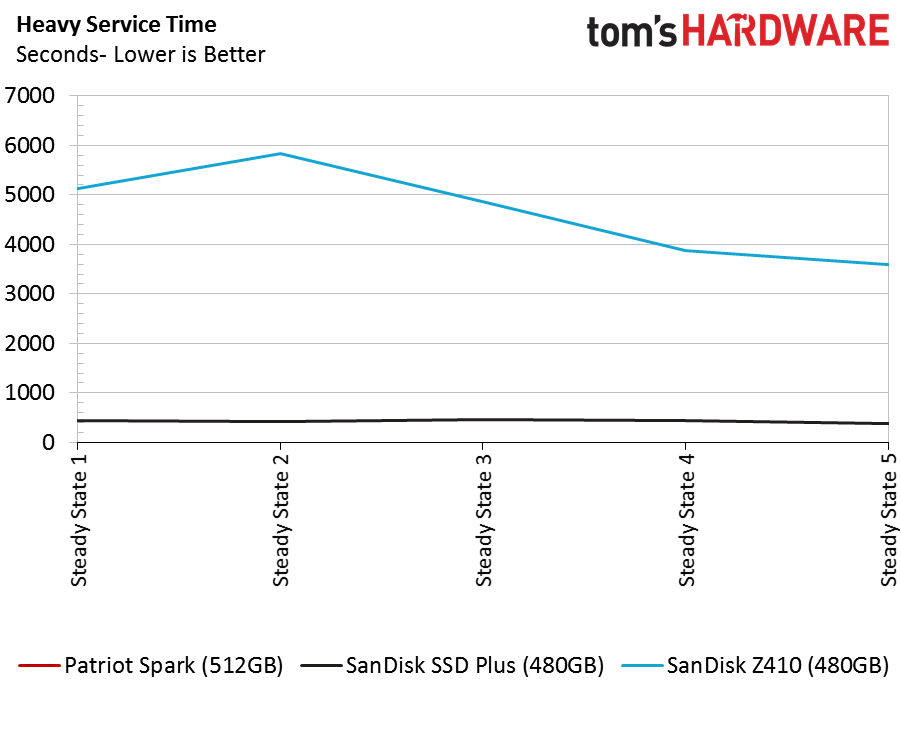
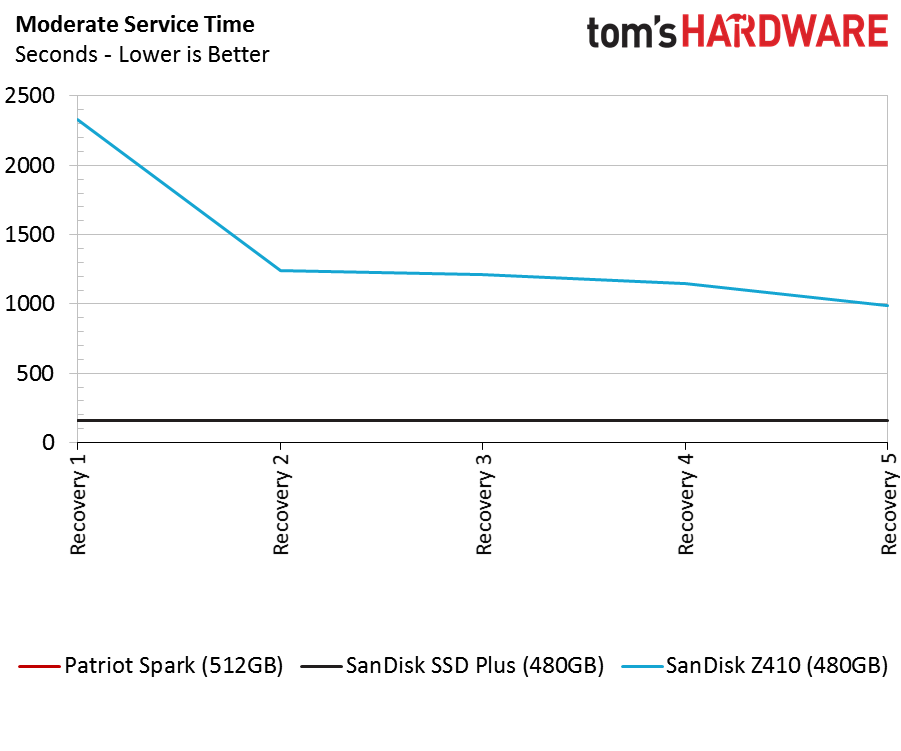
The SanDisk SSD Plus didn't deliver a great service time test, but it beat the Z410 by a large margin.
Notebook Battery Life


The SanDisk Z410 without a power-hungry DRAM package once again delivers more notebook battery time than any of the other DRAMless retail products. The SMI SM2256XT has power consumption down to a science.
MORE: Best CPU Cooling
Current page: 512GB Benchmark Results
Prev Page 256GB Benchmark Results Next Page Phison S11 3D Reference DesignsGet Tom's Hardware's best news and in-depth reviews, straight to your inbox.

Chris Ramseyer was a senior contributing editor for Tom's Hardware. He tested and reviewed consumer storage.
-
ponchato Look you guys need to get rid of this autoplaying, auto-resizing video or I'm done here. A tech website should not be this unusable. Skipping half a page down when I scroll slightly too far is incredibly annoying and you KNOW it irritates people and kills site usability. If it's not fixed or removed by this time next week (that's February 18th, 2017) I'm never coming to Tom's again.Reply -
MCMunroe I agree with ponchato. Every page has this big video that plays the same damn thing that is usually the biggest image on the screen. For months it was a smaller video of Doom that played over and over, and now is a big video of cherry keys. WTF.Reply
Can't you just tuck in normal ads? -
hixbot Agreed. And these click bait "from the web" ads are fake news scams at best and misogynistic and offensive at worst.Reply -
JimmiG I have a WD Green 240 GB SSD (DRAM less Marvell 88SS1074 and TLC) as a Steam games drive. It works fine for that purpose, since it's mostly sequential/random reads and very few writes (only when a game updates). No reason to not get one for that purpose, even as an "enthusiast". However, I wouldn't use them as system drives. I'm using a Samsung 850 Evo for that.Reply -
Mindrax Use uBlock or Adblock to prevent that.Reply
:)
I can't believe you don't already.
Internet is a horrible place without blockers. -
bit_user Gosh, I'm getting so paranoid about these ads that I wasn't even sure if theReply
Was this helpful?
Tom's needs your feedbackbanner was legit. Seems to be. -
bit_user Thanks for the tests, Chris (and the correction, Jon).Reply
Some of these SSD definitely need to come with a warning label!
-
jakjawagon You guys need to fix your UK website. Half the graphs are missing. Posting this here as well because it's more likely to be seen.Reply -
bit_user Reply
On some articles, with pages that have lots of graphs, occasionally not all of them load for me. I'd say try restarting your web browser or use a different one & see if that makes a difference.19284248 said:You guys need to fix your UK website. Half the graphs are missing. Posting this here as well because it's more likely to be seen. -
derekullo Firefox + Noscript + Adblock + Hosts file from www.winhelp2002.mvps.org/hosts.htmReply
Stop complaining and just block them.
I literally see 0 ads on Toms when I use the above with Firefox.
The host file i would say is the most important.
Even when I open Chrome 90% of the ads are gone, including the super annoying Doom video some guy was posting about yesterday. I literally had to go to another computer that didn't have the custom host file to see it. lol
I don't have adblock nor noscript with chrome so the hosts file alone is blocking those ads.


